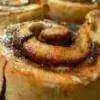-
Welcome to Celiac.com!
You have found your celiac tribe! Join us and ask questions in our forum, share your story, and connect with others.
-
Celiac.com Sponsor (A1):
Celiac.com Sponsor (A1-M):
-
Get Celiac.com Updates:Support Our Content
Asian Rice Pasta, Homemade
-
Get Celiac.com Updates:Support Celiac.com:
-
Celiac.com Sponsor (A17):
Celiac.com Sponsor (A17):
Celiac.com Sponsors (A17-M):
-
Recent Activity
-
- TerryinCO replied to TerryinCO's topic in Post Diagnosis, Recovery & Treatment of Celiac Disease2
Status Update...
Thank you for the information. I did order/receive GliadinX to have on hand in the event of suspected exposure. -
- Dc91 replied to Dc91's topic in Celiac Disease Pre-Diagnosis, Testing & Symptoms7
Celiac or not?
Just had a letter through from the Celiac team, they’ve diagnosed me through my bloods, no endoscopy/biopsy needed. I guess I’ll be sticking around on this forum and I’m sure I’ll be back soon. thanks for all your help -
- trents replied to Hauama's topic in Celiac Disease Pre-Diagnosis, Testing & Symptoms1
Less than 10 parts per billion issues
I have no specific recommendations but I would suggest looking for products that are advertised as produced in a dedicated gluten-free facility. That should eliminate one possible route of cross contamination. It doesn't guarantee that none of the ingredients going into the product are totally gluten free but is should eliminate adding more CC to the mix... -
- Hauama posted a topic in Celiac Disease Pre-Diagnosis, Testing & Symptoms1
Less than 10 parts per billion issues
I can still have a reaction from “certified gluten free” products I don’t like having to use the eat and see what my body does approach are there really any purely gluten free products or do I just have to make all of my own food? -
- trents commented on Scott Adams's article in Latest Research70
COVID-19 a Possible Trigger for Celiac Disease in Those with Genetic Risk
I found this article interesting. It mentions "autoimmunity" as one of the possible contributing factors to those who experience chronic health problems following vaccinations, particularly COVID vacs. https://www.foxnews.com/health/scientists-find-clues-covid-vaccine-causes-chronic-health-problems- celiac
- celiac disease
- (and 5 more)
-



Recommended Posts
Archived
This topic is now archived and is closed to further replies.